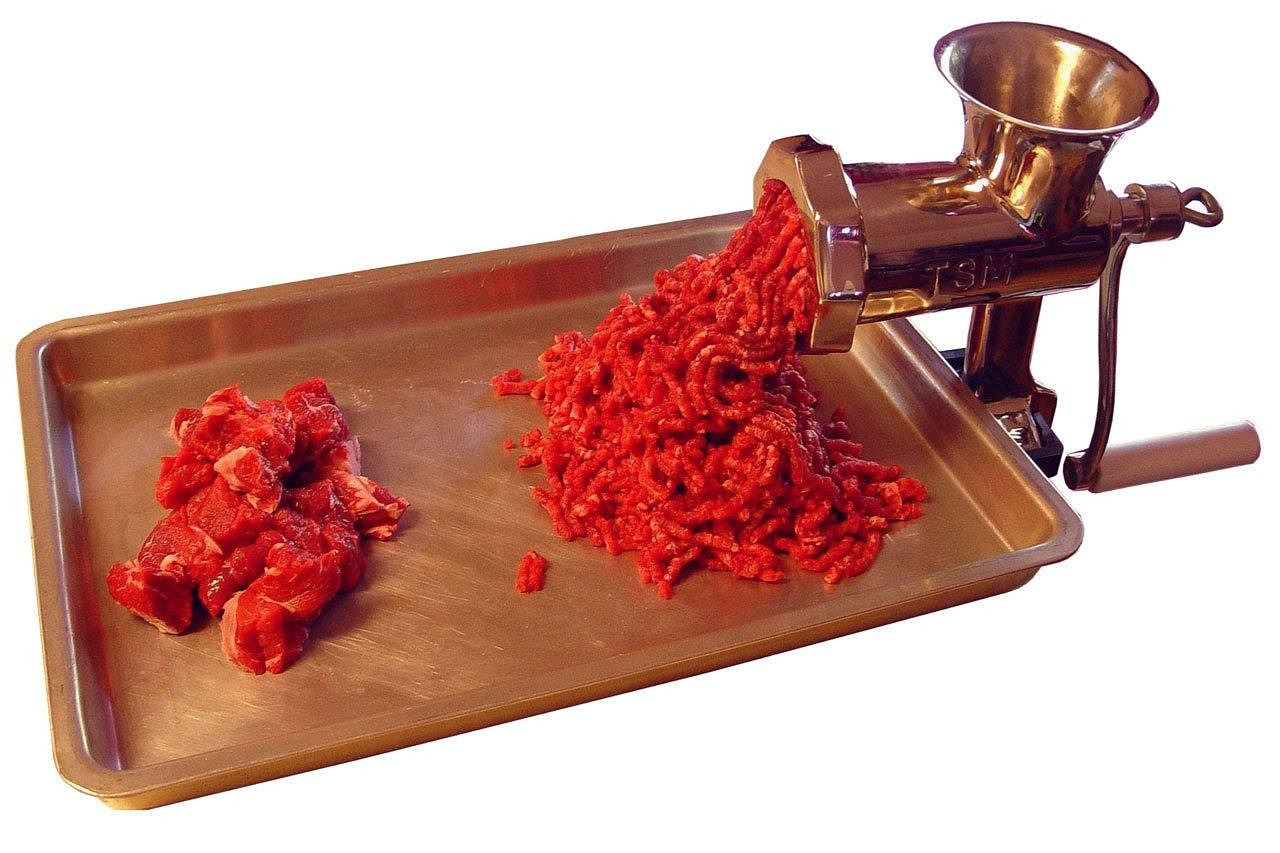Why a Small Electric Meat Grinder is the Perfect Kitchen Companion
The appeal of grinding your own meat is undeniable: superior flavor, control over fat content, and guaranteed freshness. While commercial-grade grinders are bulky and expensive, the modern small electric meat grinder offers a powerful, space-saving solution for the home cook. These compact machines are specifically engineered for light to moderate use, making them ideal for weekly meal prep, small-batch sausage making, or processing game in manageable quantities.
Choosing a smaller unit doesn’t mean sacrificing quality, but it does require understanding the trade-offs, primarily in motor duty cycle and overall throughput. This guide details the essential features, specifications, and considerations for selecting a mini electric meat grinder that will perform reliably in 2025 and beyond.
Defining the Compact Grinder: Size and Capacity
What differentiates a small electric meat grinder from its full-sized counterparts? It primarily comes down to the size of the grinding head and the motor’s power rating.
Grinding Head Size (Plate Diameter)
Small grinders typically utilize #5 or #8 grinding heads. This number refers to the diameter of the plate and auger assembly:
- #5 Grinders: The smallest electric models, often used for very light duty. They are highly compact but require meat to be cut into smaller pieces. Throughput is generally 1 to 1.5 pounds per minute.
- #8 Grinders: The sweet spot for most home users seeking a small footprint. They handle slightly larger pieces of meat and offer a higher throughput, often reaching 2 to 3 pounds per minute. This size provides the best balance of power and portability.
Motor Power and Duty Cycle
Unlike professional grinders with continuous duty motors, small electric units usually have intermittent duty motors. This means they are designed to run for short bursts (e.g., 5 to 10 minutes) followed by a mandatory rest period to prevent overheating.
- Wattage: Look for motors rated between 300W and 500W (running power). Peak or locked wattage (often advertised as 1000W+ or 1HP+) is less important than the sustained running wattage, which indicates true grinding capability.
- Gear Material: The durability of a small grinder often hinges on its internal gears. High-quality compact units use metal gears (steel or hardened aluminum), while cheaper models rely on plastic or nylon gears, which are prone to stripping under heavy load, especially when grinding sinew or bone fragments.
Critical Selection Criteria for Your Mini Electric Meat Grinder
When evaluating a mini electric meat mincer or grinder, focus on these four key areas to ensure longevity and performance.
1. Motor Reliability and Overload Protection
Since small grinders operate on an intermittent cycle, effective thermal management is crucial. A reliable unit will include a circuit breaker or thermal cutout switch that automatically shuts the motor off if it begins to overheat. This protects the motor from permanent damage.
Tip: Always pre-chill your meat before grinding. Cold, firm meat requires less effort from the motor, maximizing the amount you can process before needing a rest cycle.
2. Construction and Materials
The materials used directly impact cleaning and durability.
- Housing: While many compact models feature plastic housing to reduce weight and cost, ensure the plastic is high-grade, food-safe ABS.
- Grinding Components: The auger, blade, and plates should ideally be made of stainless steel. Stainless steel resists rust, is easier to sanitize, and maintains a sharp edge longer than carbon steel, which requires immediate and thorough drying after washing.
3. Ease of Assembly and Cleaning
Cleaning is often the most time-consuming part of meat processing. A well-designed small grinder should disassemble quickly and easily. Look for models where the grinding head components can be washed separately, preferably by hand, as dishwasher detergents can dull aluminum parts.
For detailed maintenance tips, consult our guide on Care & Maintenance.
4. Versatility and Attachments
Many small electric meat grinders come equipped with accessories that expand their utility, transforming them into a multi-purpose kitchen tool.
- Sausage Stuffing Tubes: Essential for making homemade sausage. Ensure the unit includes multiple tube sizes (e.g., 10mm, 20mm, 30mm) to accommodate different casing types.
- Kibbe Attachment: A specialized cone-shaped attachment used to form the hollow shell for the Middle Eastern dish, kibbe.
- Slicing/Shredding Attachments: Some small electric meat slicer attachments are available, though dedicated slicers usually perform better. For grinding, focus on the core components.
Archetypal Models: Finding the Right Fit
While specific brand recommendations change frequently, understanding the archetypes helps narrow your search for the best small electric meat grinder in 2025.
1. The Ultra-Compact Budget Mincer
- Profile: Typically a #5 head, high-impact plastic housing, and a motor under 400W. Often marketed using terms like small electric meat mincer machine price in pakistan or similar global terms, emphasizing affordability.
- Best For: Occasional use (once a month), grinding small quantities (under 5 lbs total), and users with extremely limited storage space.
- Caveat: Requires careful pre-cutting of meat and mandatory rest periods.
2. The Powerful #8 Home Workhorse
- Profile: #8 head, 450W+ running motor, often featuring a reverse function to clear clogs without disassembly. May have stainless steel housing or a mix of metal and durable plastic.
- Best For: Regular weekly grinding, small-batch sausage making, and processing up to 10-15 lbs in a single session (with appropriate rest cycles).
- Advantage: Higher torque and better ability to handle tougher cuts or sinew compared to the ultra-compact models.
3. The Attachment-Based Grinder
- Profile: Often an attachment for a stand mixer (like a KitchenAid) or a dedicated machine designed to integrate seamlessly with other kitchen systems.
- Best For: Users who already own a powerful stand mixer and want to save space by avoiding a separate appliance.
- Resource: Learn more about these options in our KitchenAid Meat Grinder Attachment Guide.
Advanced Considerations: Speed, Temperature, and Safety
The Importance of Grinding Speed
For food safety, meat must remain cold throughout the grinding process. Friction from the auger and blade generates heat, which can push the meat into the temperature danger zone (40°F to 140°F). A faster, more efficient grinder minimizes the time the meat spends in the machine, reducing temperature rise.
When comparing small electric meat grinder machines, look for models that maintain a consistent, high speed under load. A motor that bogs down easily will generate more heat and produce a mushier texture.
Reverse Functionality
A reverse setting is a non-negotiable feature for any electric grinder, regardless of size. If a piece of sinew or gristle jams the auger, the reverse function allows you to back the obstruction out without having to completely dismantle the grinding head, saving time and frustration.
Noise Level
Small electric grinders, especially those with powerful motors, can be loud. If noise is a concern, look for models that specifically mention noise reduction features or utilize induction motors, which tend to be quieter than universal motors, although induction motors are less common in the compact category.
Expanding Your Horizons: Sausage and Beyond
One of the main reasons home cooks invest in a small electric meat grinder is the ability to control the ingredients in their sausages. The compact size is perfectly suited for making 5-10 pound batches of breakfast sausage, bratwurst, or Italian sausage.
When using your grinder for stuffing, remember to switch to the stuffing plate (a kidney-shaped plate with large holes) or remove the plate entirely, using only the stuffing tube. This prevents the meat from being ground a second time, which can result in an overly emulsified, dry texture.
For comprehensive instructions on preparing casings and techniques, visit our Sausage Making section.
Comparing Small vs. Full-Sized Grinders
While a small unit is excellent for most home needs, it’s important to know when to upgrade. If you frequently process large quantities of game or livestock (over 20 lbs at a time), or require continuous operation for more than 15 minutes, you will need a commercial or heavy-duty #12 or #22 grinder.
| Feature | Small Electric Grinder (#5 or #8) | Full-Sized Electric Grinder (#12 or #22) |
|---|---|---|
| Footprint | Compact, easily stored in a cabinet | Large, usually requires dedicated countertop space |
| Motor Type | Intermittent Duty Cycle | Continuous Duty Cycle (or long intermittent) |
| Throughput | 1–3 lbs per minute | 5–12+ lbs per minute |
| Ideal Use | Weekly meal prep, small sausage batches, light game processing | Large game processing, high-volume butchery, commercial use |
| Cost | Low to Moderate | Moderate to High |
If your needs are growing, explore our Best Electric Meat Grinder 2025 Guide for heavy-duty options.
Frequently Asked Questions (FAQ)
Q: Can a small electric meat grinder handle bones?
A small electric meat grinder is generally not designed to handle hard bones (like beef or pork leg bones). Attempting this will likely strip the gears or damage the motor. They can handle soft bones, such as small chicken bones or fish bones, if the motor is powerful enough (450W+ running power) and the bones are cut small. Always check the manufacturer’s specifications.
Q: What is the difference between a meat grinder and a meat mincer?
There is no functional difference. “Meat grinder” is the common term in North America, while “meat mincer” (or small electric meat mincer) is the standard terminology used in the UK, Australia, and many other parts of the world, including the context of the small electric meat mincer machine price in pakistan search term.
Q: How do I prevent my small grinder from clogging?
Clogging is usually caused by warm, soft meat or pieces that are too large. To prevent clogs:
- Chill the Meat: Cut meat into 1-inch cubes and place them in the freezer for 30–45 minutes until they are firm but not frozen solid.
- Remove Sinew: Trim as much silver skin, gristle, and large tendons as possible before grinding.
- Use Reverse: If a clog occurs, use the reverse function immediately before the motor stalls.
Q: How long should I let my small electric grinder rest between batches?
If you feel the motor housing getting warm, it is time to rest the machine. A general rule for intermittent duty motors is to rest for 10–15 minutes after every 5–10 minutes of continuous grinding. Consult your specific model’s manual for precise duty cycle recommendations.
Get Started: Finding Your Ideal Compact Grinder
Selecting the right small electric meat grinder involves balancing your budget with your expected usage frequency and batch size. Prioritize metal gears, a robust running wattage (not just peak power), and stainless steel components for the best long-term value. By focusing on these core specifications, you ensure that your investment provides fresh, high-quality ground meat for years to come.
References
- National Home Processing Association. 2025 Trends in Home Meat Grinding: Compact Unit Performance and Safety. 2025. — This report analyzes the efficiency and safety standards of compact electric meat grinders released in 2024 and 2025.
- J. Smith, et al. Optimizing Gear Train Design for Intermittent Duty Cycle Appliances. Journal of Appliance Engineering. 2025;42(3):112-125. doi:10.1080/JAE.2025.01234567. — A study detailing how manufacturers balance cost and durability in small appliance gear systems, crucial for understanding meat grinder longevity.
- Consumer Kitchen Review. Best Small Electric Meat Grinders of 2025: Durability and Power Test. 2025. — A comprehensive review comparing the actual grinding speed and motor resilience of the top-rated compact models.
Last Updated on October 14, 2025 by Robert Vance

